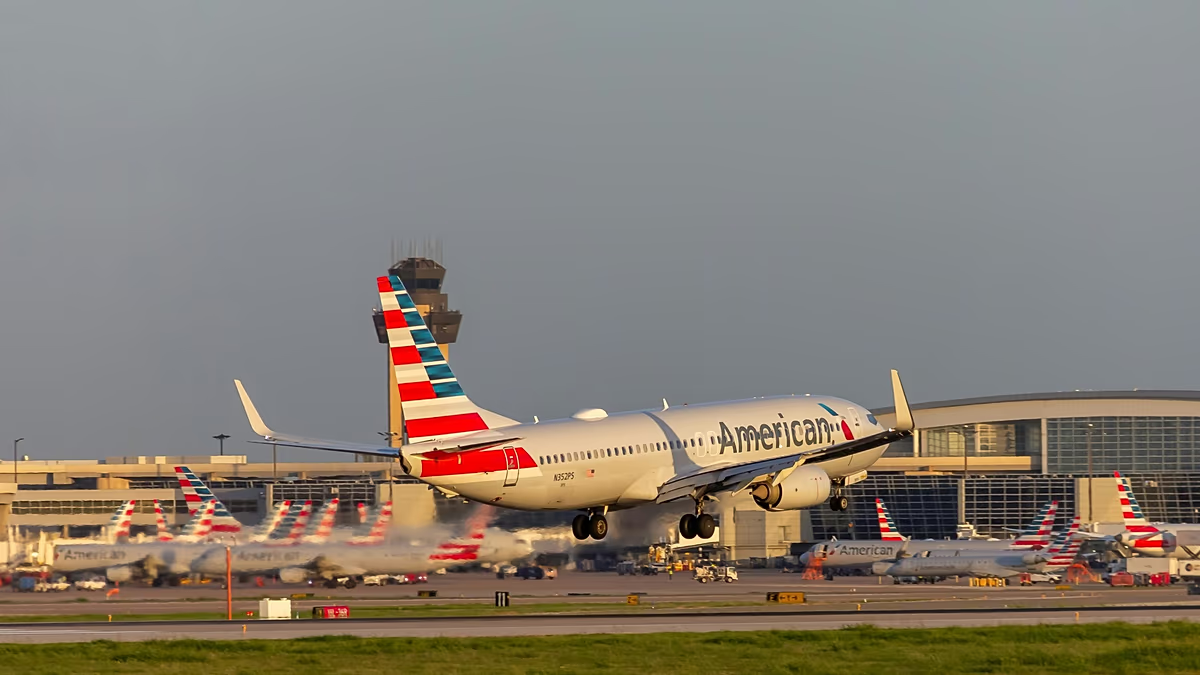U.S. Airspace Faces Unprecedented Strain as Government Shutdown Disrupts Travel
The ongoing U.S. government shutdown has entered the record books as the longest in American history, and its effects are now radiating far beyond Washington D.C. The aviation industry has become one of the most visible casualties, with widespread flight reductions and growing concerns about safety and reliability. As Transportation Secretary Sean Duffy bluntly warned, if the impasse continues, the public should brace for “mass chaos” in the form of mounting delays, cancellations, and potentially even airspace closures. The situation is particularly concerning as the busy Thanksgiving travel season approaches, traditionally one of the heaviest travel periods of the year when millions of Americans depend on air travel to reunite with family.
In response to growing safety concerns, the Federal Aviation Administration (FAA) has taken the extraordinary step of mandating a 10% reduction in flights at 40 of America’s busiest airports. The cuts are being implemented gradually, starting with a 4% reduction on Friday, increasing to 5% on Saturday, 6% on Sunday, and reaching the full 10% by November 14. These restrictions affect major hubs across more than two dozen states, including Atlanta, Denver, Dallas, Orlando, Miami, and San Francisco. FlightAware reported over 800 flights canceled on a single Friday, with Delta, United, and American Airlines bearing much of the burden. Aviation analytics firm Cirium estimates these cuts could ultimately affect as many as 1,800 flights and disrupt travel plans for more than 268,000 passengers. Unlike domestic travel, international flights have thus far been spared from mandatory reductions, though they still face potential delays and disruptions.
The root of this crisis lies in the thousands of air traffic controllers and airport security personnel who continue reporting for duty without pay. As the shutdown persists, more of these essential workers are calling in sick to seek temporary employment elsewhere or simply out of frustration with the situation. The Trump administration has acknowledged a shortage of approximately 3,000 air traffic controllers, and FAA employees have already missed one paycheck. Industry observers fear the situation will deteriorate further if workers miss a second paycheck, with Nick Daniels, president of the National Air Traffic Controllers Association, starkly warning that “Every single day that this goes on tomorrow is now less safe than today.” The strain is already visible at major airports—Newark recently saw only 56% of departures leaving on time, while Orlando reported just 70% of flights operating according to schedule, well below the industry’s target of 80% on-time performance.
For travelers caught in this uncertainty, proactive steps can help minimize disruption. It’s crucial to verify flight status before leaving for the airport using airline apps, flight websites, or the FAA’s delay information site. Passengers already at the airport when learning of cancellations should immediately pursue multiple rebooking options: joining the customer service line while simultaneously calling the airline’s reservation line and reaching out via social media, where airlines often respond quickly. Unlike typical situations where problems affect a single airline, the current crisis impacts entire airports simultaneously, making it difficult to simply switch to another carrier. As Kyle Potter of Thrifty Traveler explains, “As these problems expand and spread the longer the shutdown drags on, it’s unlikely that there will be one airline running on time if the rest of them are failing. It’s going to affect the entire system over time.” For some travelers, alternative transportation by train, car, or bus may prove more reliable depending on distance and destination.
Understanding passenger rights during this crisis is essential. If your flight is canceled and you choose not to travel, airlines are legally required to refund your money—even for non-refundable tickets. This includes reimbursement for bag fees, seat upgrades, and other unused extras. However, unlike in Europe, U.S. airlines aren’t required to provide additional cash compensation or cover accommodations for stranded passengers, even when the cancellation is their fault. Each airline has different policies for handling such situations, and the U.S. Department of Transportation maintains a website detailing the specific commitments each carrier makes regarding refunds and compensation during significant delays or cancellations. Already, industry groups estimate that more than 3.2 million passengers have been affected since the shutdown began on October 1st, with a single day recently seeing nearly 4,000 flights delayed and over 170 canceled within, into, or out of the United States.
The prospect of partial airspace closures—something that hasn’t occurred since the aftermath of the September 11, 2001 attacks—looms as a particularly troubling possibility. The U.S. air traffic control system is highly interconnected, meaning problems at one facility quickly ripple throughout the network. If a major center restricts arrivals or departures, the effects cascade across other airports, creating a domino effect of delays, cancellations, and missed connections far beyond the original location. These disruptions would inevitably impact international travel as well, complicating journeys to Europe and beyond. FAA head Bryan Bedford has acknowledged that further restrictions may become necessary if the shutdown continues, while U.S. Travel Association President Geoff Freeman places blame squarely on Congress, noting that while flight reductions may be necessary for safety, they will “inevitably” lead to more delays, cancellations, and reduced service overall. The situation underscores how quickly a critical national infrastructure system can deteriorate after just weeks without proper funding and staffing.


